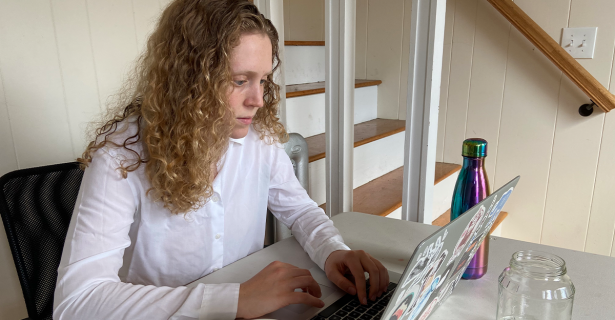As a rising senior at Tufts, I have come to realize that the beauty of my education is that, every so often, I take a class that greatly alters my perspective about the relationship between peoples, states, and institutions. I have begun to seek out these experiences, which are simultaneously liberating and overwhelming, and this past year I was lucky enough to find one in Political Violence in State and Society. In the class, we explored the relationship between violence and state-building and the ways in which state and non-state actors employ violence to further their goals. I left that class not only with a deeper understanding of how civilian and ruling actors engage through conflict, but with a renewed eagerness to promote political rights and change the structures that lead to oppression.
This drive to use my theoretical understanding and apply it to present-day situations led me to apply for an Oslo Scholars internship with the Centre for Applied Nonviolent Actions and Strategies (CANVAS), where I am fortunate to be working as an intern this summer under human rights activist Srdja Popovic. CANVAS’ mission is to fundamentally alter the incentive structures that lead from political dissatisfaction to violence by unlocking people-power; by conducting research and leading trainings on effective nonviolent protests, CANVAS supports activists across the globe in their struggles to promote democracy. What has become increasingly apparent is that, fundamentally, a government’s legitimacy does not come from its ability to exert force, but from the support of its citizens. Harnessing the power of collective action into nonviolent movements, I am learning, has historically proven to have higher rates of success than violent campaigns. I look forward to diving deeper into these dynamics over the course of the summer.
I have spent a portion of my first two weeks at CANVAS exploring “dilemma actions,” both by reading Popovic’s Pranksters vs. Autocrats and by looking into cases on my own. A dilemma action is a nonviolent tactic used by activists that puts the ruling government into a lose-lose situation: no matter how the public authorities respond to the action, whether it is conceding to protesters’ demands or reacting with force, they lose power, legitimacy, or public support. Dilemma actions play out in ingenious and often funny ways; for example, the Polish Solidarity movement in 1982 inspired people to protest state-controlled news outlets by loading up wheelbarrows with their television sets and wheeling them down the streets, nightly. Looking into dilemma actions has highlighted that standing up to an oppressive authority takes creativity, passion, and sometimes happens in the most unexpected ways.
My other responsibilities at CANVAS thus far have included contributing to a weekly newsletter about the important political and humanitarian events in sixteen countries around the world. Even in the face of power consolidation, democratic undermining, and entrenchment on human rights, civil resistance persists. I am inspired by this resilience and am very excited to continue learning about the changing nature of activism and the power of nonviolent movements in the context of global democratic erosion.

